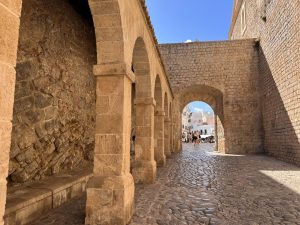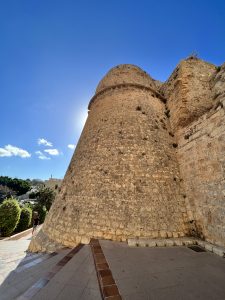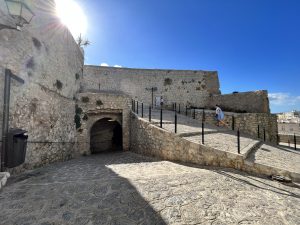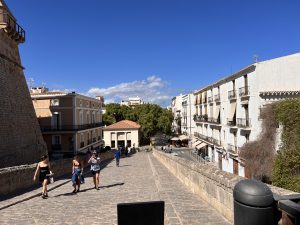
Great to see how a World Heritage site can be blended with a vibrant tourist location. Ibiza has been recognised as more than just a party island with over two decades as a world heritage site.
Ibiza provides an excellent example of the interaction between the marine and coastal ecosystems. It has a diverse nature setting with dense prairies of oceanic Posidonia (seagrass), an important endemic species found only in the Mediterranean basin.
They contain and support a diversity of marine life, and recent steps to promote this have been an ecological success story.
 Ibiza preserves much evidence of its long history. The archaeological sites at Sa Caleta (settlement) and Puig des Molins (necropolis) testify to the important role played by the island in the Mediterranean economy in protohistory, particularly during the Phoenician-Carthaginian period. The fortified Upper Town (Alta Vila) is an outstanding example of Renaissance military architecture; it had a profound influence on the development of fortifications in the Spanish settlements of the New World.
Ibiza preserves much evidence of its long history. The archaeological sites at Sa Caleta (settlement) and Puig des Molins (necropolis) testify to the important role played by the island in the Mediterranean economy in protohistory, particularly during the Phoenician-Carthaginian period. The fortified Upper Town (Alta Vila) is an outstanding example of Renaissance military architecture; it had a profound influence on the development of fortifications in the Spanish settlements of the New World.
 It’s salt economy generated much wealth and its legacy of an island fortress has been well preserved. The walls of the old town are one of the finest examples of military engineering and while we have love for our own local walled city of Londonderry it’s clear how Ibiza has gained its World Heritage Site status.
It’s salt economy generated much wealth and its legacy of an island fortress has been well preserved. The walls of the old town are one of the finest examples of military engineering and while we have love for our own local walled city of Londonderry it’s clear how Ibiza has gained its World Heritage Site status.

Looking at the modern development which has been made part of the ancient walls it is clear how hard it is to marry the old with the new. Despite planning difficulties it does look like a sympathetic and sensible addition. However even places like Ibiza have to be careful that development does not ruin the heritage and lead to delisting as was seen in Liverpool.
